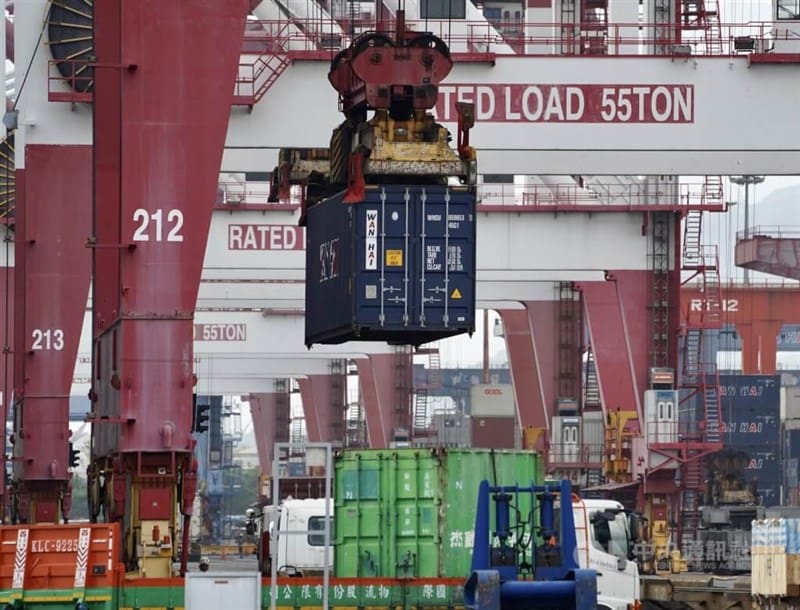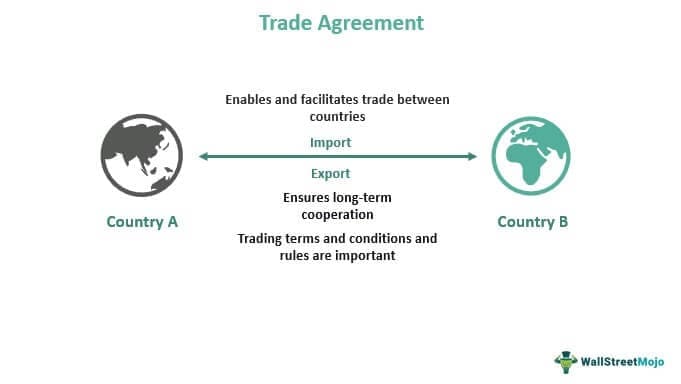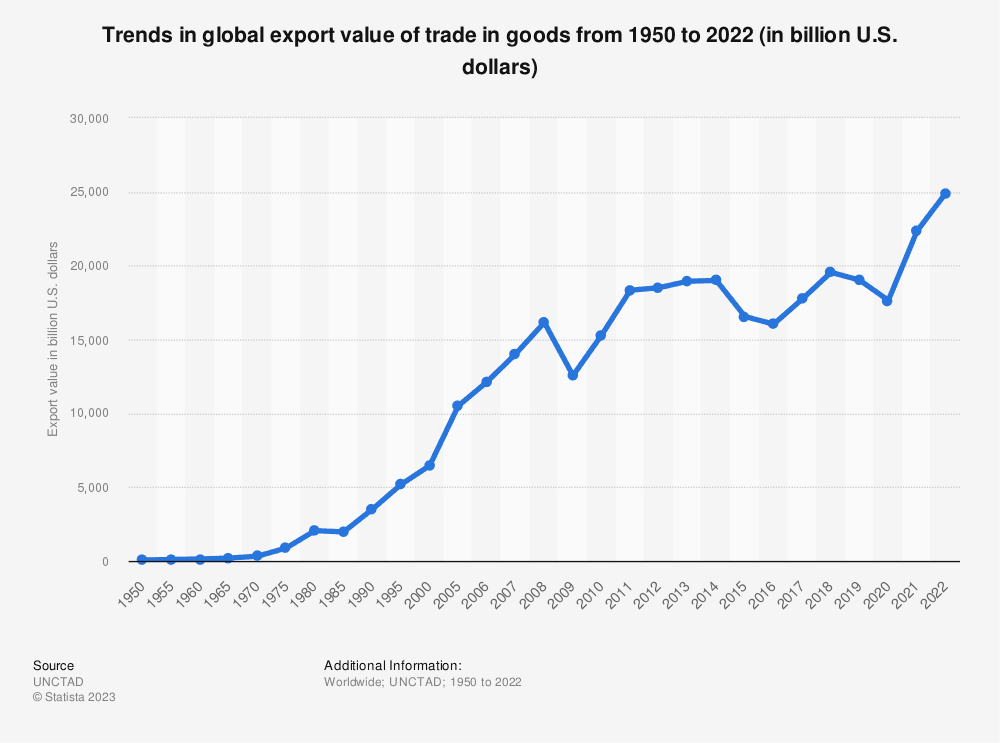Business
8 Global Agreements Reshaping International Trade Deals Today


In the fast-paced arena of international trade, a series of significant global agreements are currently reshaping the landscape of economic relationships between nations. These agreements are not only altering the way countries conduct business with one another but are also influencing the global economy as a whole.
The impacts of these agreements are far-reaching, touching on various industries and markets, and are poised to shape the future of international trade in unprecedented ways.
Key Takeaways
- The replacement of NAFTA with the USMCA strengthens labor regulations, intellectual property rights, and rules of origin for automobiles, impacting various industries and sectors.
- The CPTPP has the potential to boost member countries’ GDP by $147 billion by 2030 through reduced tariffs, enhanced market access, and provisions for intellectual property rights, labor standards, and environmental safeguards.
- There is growing interest from other nations to join the CPTPP, which could reshape international trade dynamics and create new avenues for economic cooperation and growth.
- The EU-Japan Economic Partnership aims to stimulate economic growth and create new opportunities for businesses through significant tariff reductions, regulatory cooperation, and streamlined standards and regulations.
NAFTA
Overhauling the North American Free Trade Agreement (NAFTA) was a pivotal moment in reshaping international trade deals, impacting the economies of the United States, Canada, and Mexico. NAFTA, established in 1994, aimed to eliminate barriers to trade and investment among the three member countries. Over the years, NAFTA facilitated a significant increase in trade, with trilateral trade among the member countries reaching $1.14 trillion in 2019. The agreement also contributed to the growth of the North American economy, with regional trade supporting millions of jobs across various sectors.
However, NAFTA faced criticism, particularly in the United States, for its impact on employment and labor conditions. As a response, the United States-Mexico-Canada Agreement (USMCA) was negotiated and came into effect on July 1, 2020, replacing NAFTA. The USMCA includes updated provisions on digital trade, intellectual property, and labor and environmental standards, aiming to create a more balanced and fair trading environment among the member countries.
The renegotiation of NAFTA into the USMCA reflects a significant shift in international trade agreements, emphasizing the need for modernization and addressing contemporary trade challenges while promoting economic growth and freedom.
CPTPP
The Comprehensive and Progressive Agreement for Trans-Pacific Partnership (CPTPP) has garnered attention for its potential economic benefits, trade impact, and the possibility of expanding its membership.
Analyzing the data on the CPTPP’s effects on member countries’ economies and trade flows will provide valuable insights into its real-world impact.
Additionally, examining the dynamics of potential new members joining the agreement will shed light on the evolving landscape of international trade alliances.
CPTPP Benefits
This analysis will delve into the potential economic benefits of the Comprehensive and Progressive Agreement for Trans-Pacific Partnership (CPTPP) on global trade.
The CPTPP offers significant advantages for its member countries, including reduced tariffs and enhanced market access. According to the World Bank, the agreement could potentially boost member countries’ GDP by $147 billion by 2030. Additionally, it is projected to increase trade among member countries and promote economic growth.


By eliminating or lowering tariffs on a wide range of goods and services, the CPTPP facilitates a more seamless flow of trade, benefiting businesses and consumers. Moreover, the agreement includes provisions for intellectual property rights protection, labor standards, and environmental safeguards, ensuring a fair and sustainable trading environment.
Trade Impact
The impact of the Comprehensive and Progressive Agreement for Trans-Pacific Partnership (CPTPP) on international trade is poised to significantly influence global economic dynamics, reflecting a comprehensive reformulation of trade relations among its member countries.
The CPTPP, comprising 11 nations and covering 13.5% of the global economy, is anticipated to foster increased trade flows, reduced trade barriers, and enhanced market access for member countries. Through the elimination of tariffs on a wide range of goods and services, the agreement is projected to bolster economic growth and facilitate investment opportunities.
Moreover, the CPTPP’s provisions regarding intellectual property rights, labor standards, and environmental protections are expected to set new benchmarks for international trade agreements, contributing to a more balanced and sustainable global trading system.
As the CPTPP continues to shape trade dynamics, its impact on global commerce is likely to be profound and enduring.


Membership Expansion
With the Comprehensive and Progressive Agreement for Trans-Pacific Partnership (CPTPP) poised to significantly influence global economic dynamics, the prospect of membership expansion within the agreement is generating keen interest among countries seeking to capitalize on its trade benefits.
The CPTPP currently includes 11 member countries, and there is growing interest from other nations in the Asia-Pacific region and beyond to join the agreement. Membership expansion could further enhance the agreement’s economic significance and provide new opportunities for trade and investment.
Potential new members are carefully considering the requirements and potential gains of joining the CPTPP, analyzing the potential impact on their domestic industries and overall economic growth.
As the trade landscape continues to evolve, the expansion of CPTPP membership holds the potential to reshape international trade dynamics and create new avenues for economic cooperation and growth.
EU-Japan Economic Partnership
The EU-Japan Economic Partnership has led to significant tariff reductions on a wide range of products, enhancing market access for businesses in both regions.


Additionally, the agreement includes provisions for regulatory cooperation, which aims to streamline standards and regulations, reducing barriers to trade and investment.
These points demonstrate the potential for the EU-Japan Economic Partnership to stimulate economic growth and create new opportunities for businesses on both sides.
Tariff Reductions
A significant reduction in tariffs has resulted from the EU-Japan Economic Partnership, marking a pivotal shift in international trade dynamics. This development is poised to have far-reaching implications for businesses, consumers, and economies on both sides.
The tariff reductions under this agreement are expected to create a more level playing field, fostering increased competition and innovation. As a result, consumers are likely to benefit from a broader range of high-quality products at more competitive prices.
Additionally, businesses can explore new opportunities for expansion and diversification, potentially leading to job creation and economic growth.


Ultimately, the EU-Japan Economic Partnership’s tariff reductions are not only reshaping trade dynamics but also have the potential to enhance freedom of choice and economic prosperity for individuals and businesses alike.
Regulatory Cooperation
How does the regulatory cooperation component of the EU-Japan Economic Partnership impact trade dynamics and market access for businesses in both regions?
The regulatory cooperation aspect of the EU-Japan Economic Partnership aims to streamline and align regulations and standards between the two regions. By reducing regulatory barriers, businesses can benefit from simplified processes for product approvals and certifications, which ultimately facilitates market access.
This cooperation also fosters mutual recognition of standards, promoting a more efficient and cost-effective trading environment. Furthermore, it encourages information sharing and best practices in regulatory approaches, leading to enhanced transparency and predictability for businesses.
Ultimately, this regulatory cooperation enhances trade dynamics by creating a more conducive environment for businesses in the EU and Japan, fostering economic growth and market expansion.


USMCA
Amidst the complex web of international trade agreements, the USMCA has emerged as a significant reconfiguration of trade relations in North America. The United States-Mexico-Canada Agreement (USMCA) has replaced the North American Free Trade Agreement (NAFTA) and aims to modernize and rebalance trade relationships between the three countries.
This trade deal has brought about several key changes, including:
- Strengthening labor regulations and workers’ rights protections, addressing concerns about labor conditions and wage levels.
- Implementing stronger intellectual property rights, which could incentivize innovation and creativity across the region.
- Promoting fair competition by adjusting rules of origin for automobiles, encouraging the production of vehicles and parts within the region.
The USMCA’s provisions have the potential to impact various industries and sectors, making it a focal point of discussion for policymakers, businesses, and the public. The agreement reflects a shift in trade policy, emphasizing the need for fair and reciprocal trade while supporting economic growth and opportunity.
As the USMCA continues to shape North American trade, its implications will be closely monitored to assess its effectiveness in promoting prosperity and freedom across the region.
ASEAN Free Trade Area
The USMCA, a significant reconfiguration of trade relations in North America, has set the stage for the discussion of the ASEAN Free Trade Area, which has been a pivotal development in Southeast Asia’s economic integration.


The ASEAN Free Trade Area (AFTA) came into effect in 1992 with the goal of eliminating tariffs and non-tariff barriers among the Association of Southeast Asian Nations (ASEAN) members. AFTA aims to foster a more seamless and efficient flow of goods, services, and investment within the region. By promoting economic integration, AFTA seeks to enhance the region’s competitiveness and attractiveness to foreign investors.
The AFTA agreement has resulted in significant trade creation among its member countries, leading to an increase in intra-regional trade. Over the years, AFTA has expanded to include newer member states and has continued to deepen its economic cooperation through various measures, including the Common Effective Preferential Tariff (CEPT) scheme.
As a result, AFTA has played a crucial role in shaping Southeast Asia’s economic landscape and has contributed to the region’s emergence as a global economic powerhouse.
EFTA
Established in 1960, the European Free Trade Association (EFTA) comprises four member states and has played a significant role in facilitating trade relations among its members and with other countries. EFTA’s main objectives include the promotion of free trade and economic integration, as well as the expansion of trade relations with countries beyond its membership.
EFTA fosters economic freedom and prosperity by eliminating tariffs and trade barriers among its member states, creating a conducive environment for businesses to thrive and for consumers to benefit from a wider range of goods and services.


EFTA’s commitment to trade liberalization promotes competition and innovation, driving economic growth and providing more opportunities for businesses and individuals to succeed in a free and open market.
By engaging in trade agreements with various countries, EFTA not only expands economic opportunities for its members but also contributes to global economic development and cooperation, fostering a sense of interconnectedness and mutual benefit among nations.
EFTA continues to be a key player in shaping international trade deals, promoting economic freedom, and facilitating global trade relations.
Mercosur
Having established itself as a key player in shaping international trade deals and promoting economic freedom, EFTA’s influence extends to its engagement with Mercosur, a regional trade bloc in South America.
Mercosur, comprising Argentina, Brazil, Paraguay, and Uruguay, with Bolivia as a candidate member, is one of the major trade blocs in the world, representing a significant market.


The trade volume between EFTA and Mercosur has been substantial, with a clear potential for growth. Both entities have been engaged in negotiations to create a comprehensive trade agreement, aiming to enhance market access, strengthen economic ties, and promote investment opportunities.
This agreement holds the promise of reducing or eliminating tariffs on a wide range of goods and services, facilitating trade between the two regions. Moreover, it seeks to establish transparent and predictable conditions for trade, contributing to a more stable and secure business environment.
The potential benefits of this agreement are vast, promising to boost economic growth, create employment opportunities, and foster prosperity for the people of the member countries.
SAFTA
SAFTA, the South Asian Free Trade Agreement, is a regional trade bloc comprising eight member countries in South Asia. Since its establishment in 2006, SAFTA has aimed to promote economic cooperation and integration among its members, which include Afghanistan, Bangladesh, Bhutan, India, Maldives, Nepal, Pakistan, and Sri Lanka.
Analyzing the current state of SAFTA, it is evident that the agreement has the potential to significantly impact the economies and livelihoods of the member countries.


- Increased market access: Under SAFTA, member countries benefit from reduced or eliminated tariffs on a wide range of products, leading to increased market access and trade opportunities.
- Economic growth and development: The agreement aims to foster economic growth and development in the region, potentially improving the living standards of the people in member countries.
- Regional stability and cooperation: SAFTA serves as a platform for fostering regional stability and cooperation, creating a conducive environment for peaceful coexistence and mutual prosperity.
As SAFTA continues to evolve, it is essential to monitor its implementation and assess its impact on the economies and societies within the South Asian region.
Frequently Asked Questions
How Do These Global Agreements Impact Small Businesses and Entrepreneurs in Participating Countries?
How do global agreements impact small businesses and entrepreneurs in participating countries? The impact is substantial, as they face challenges in navigating new regulations, market access, and competition. However, these agreements also present opportunities for growth and expansion.
What Are the Potential Environmental Implications of These International Trade Deals?
The potential environmental implications of international trade deals encompass various factors, including the impact on carbon emissions, deforestation, and biodiversity loss. It is imperative to assess these implications comprehensively to ensure sustainable and responsible trade practices.
How Do These Agreements Address Labor Rights and Fair Wages for Workers in Member Countries?
Addressing labor rights and fair wages in global agreements is crucial. These agreements typically include provisions for minimum wage standards, workplace safety regulations, and the right to form labor unions. This ensures that member countries uphold fair labor practices.
What Measures Are in Place to Ensure That These Agreements Benefit All Member Countries, Including Those With Less Economic Power?
To ensure equitable benefits for all member countries, measures like differential treatment, special and differential treatment provisions, and capacity-building support are incorporated into global trade agreements, aiming to address the economic disparities and empower less economically powerful nations.


How Do These Agreements Address Intellectual Property Rights and Technology Transfer Between Member Countries?
Intellectual property rights and technology transfer within global agreements are addressed through rigorous legal frameworks and enforcement mechanisms. Provisions ensure fair and equitable treatment, fostering innovation and knowledge exchange, bolstering member countries’ economic potential.


Hi, I’m Kyle Rivera, a news journalist and blog editor with the Daily Evening News. A TCU alum with a flair for storytelling, I spend my days uncovering impactful stories and my evenings exploring the realms of yoga, cycling, and whimsically bad poetry.
Travel is my escape; I’ve trekked from Tokyo’s neon lights to Iceland’s tranquil vistas. But no journey is complete without Mogli, my Golden Retriever, who’s redefining his breed standards in the most charming ways.
I love connecting with fellow travelers, yogis, cyclists, and anyone who enjoys a laugh at my poetic attempts. If you’re into stories that inspire, travel escapades, or just want to see what Mogli and I are up to, I’d love to hear from you on Instagram or Facebook. Let’s share tales and tips from around the globe!

